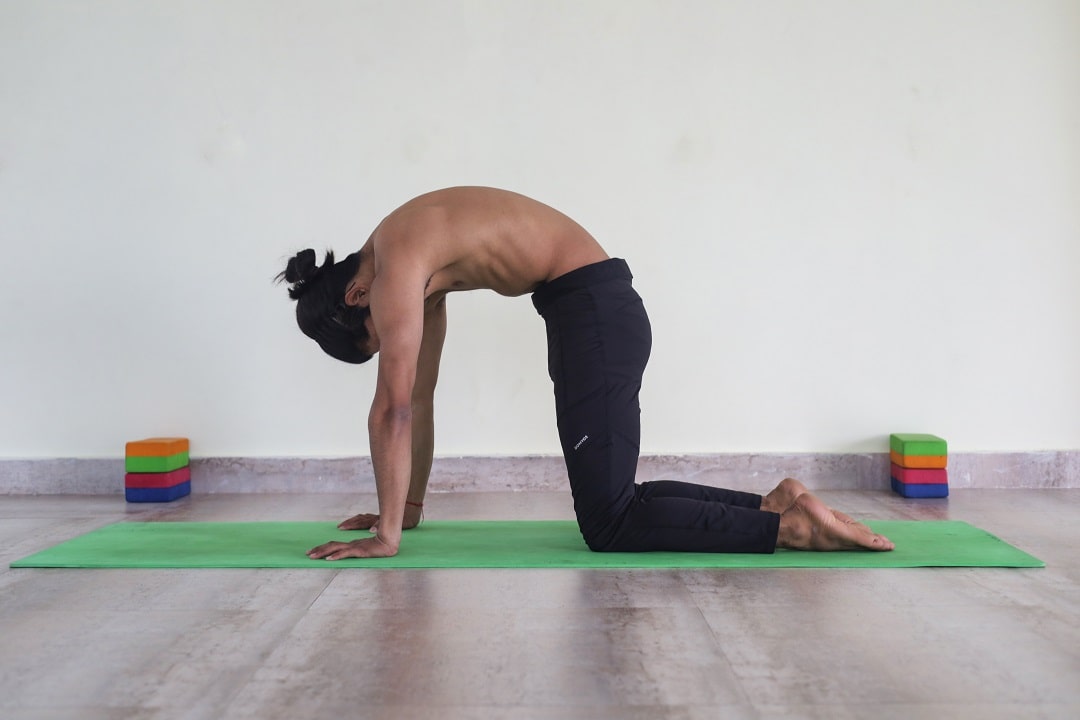
Marjaryasana (Marjarya meaning cat). This pose is also called a Cat pose and is very commonly used in all Yoga Schools.
The spine is our body’s central support structure and helps to stand and maintain the center of gravity and is a connecter between different parts of our body. Cat pose works on improving the mobility, stability and flexibility of muscles around the spine and thereby improving other areas like shoulder stability, wrist extension and strong core. This posture can be used in different ways to make it a part of a strong active workout.
What is the Benefit of a Cat post?
- Strengthens the arms wrist and shoulders: Regular practice of cat and cow will help with the wrist extension which is very commonly used in most Yoga postures. A strong protraction of the shoulders is required to do a cat pose which helps to strengthen and stabilize the shoulder joint and works on strong arms.
- Improves digestion: As this posture demands core engagement, it helps in massaging the abdominal organs thereby improving the blood flow and keeping them healthy and well-functioning.
- Facilitates good spinal mobility: Doing cat pose every morning will help a great deal in improving spinal mobility in flexion using the muscular strength of the front part of the torso.
- Tones and strengthens the core muscles: Strong cat pose works on contracting the abdominal muscles which help in building strength and stamina in the core.
How to Perform a Traditional Cat Pose?
- Come to a tabletop pose
- Hands shoulder width apart, wrist and elbows and shoulder in one line
- Knees and hips in one line and spine neutral
- Take a couple of deep inhale and exhales here
- With your next exhale:
- Flex the cervical spine by bringing the chin closer to the chest
- Flex your thoracic spine by strongly contracting the chest and thoracic muscles
- Flex your lower back by lifting your hips up and contracting the abdominal muscles
- Stay here for 5-10 deep long breath
- Slowly with next inhale drop the hips down, then the chest down and head back up into a neutral spine position.
Variations to Cat pose:
Seated variation:
- Sit in a comfortable seated position or in Vajrasana.
- Raise your hands up and interlace fingers with palms facing up.
- Bring the hands in front of you with hunched back with an exhale.
- Inhale raise the hands all the way up with inhale to a neutral spine
Standing version:
- Stand with legs hips-width distance apart
- Slightly bend your knees
- Keep the hands on the thighs and hunch the back by pulling the chest and abdomen in.
- Exhale and straighten the spine.
- Make sure you are not arching the spine when you bring them back to neutral
How to Increase the Intensity of the Cat Pose and make it an active warm-up?
- Come to the tabletop and get into a strong cat pose by protracting the shoulders and lifting the hips high.
- Now straighten the legs and step back to plank pose maintaining the strong cat at the spine
- From here bend your right knee and bring it close to your right elbow and do the same with the other leg
- Repeat this for a couple of rounds
- Now keeping the strong cat at the spine come bend the knees on a tabletop but don’t touch them down (Floating tabletop).
- Stay here for 5- 10 counts.
- Now with a strong cat, step back the legs one by one and bring it forward to the floating table top (knees off the floor)
- Repeat this for a couple of rounds.
- From here come to a downward dog with a neutral spine and stay there for 5 breaths.
- Now roll the spine to strong cat coming to high plank
- Straighten the spine and go back to a neutral spine downward facing dog
- Repeat this for a couple of rounds
- Come to a high plank pose with a strong cat from the upper back
- Do plank walks 3 steps forward and 3 steps back
- Do this for 3 rounds maintaining the strong cat from the upper back
- Rest in child pose and relax
Which asanas can be done with a cat pose?
Crow pose: To achieve good arm balancing in Crow pose, it is important to have a strong cat to get the core and shoulder stability before lifting the legs off the floor
Forward folds: Forward folds like uttanasana, paschimotanana, adhomukha shvanasana can have a slight hunch in the upper back to release the tension from the back of the legs to get a better range of motion
Deep twists: Hunch the back and go actively into a twist then passively go into the twist with a neutral back will help in getting a better range of motion in the deep twisting position.
Get in Touch
Vinyasa Yoga Ashram – Become a Certified Yoga Instructor
Call/ WhatsApp: +91-8171563333 Website : https://www.vinyasayogaashram.com/ Yoga teacher training course || 200 hour Yoga teacher training courses in India || Yoga school in IndiaRecent Posts
- Yoga Teacher Training
- Living Yoga Philosophy Daily
- The Impact of Yoga on Sleep Quality and Insomnia
- Corporate World in Yogic Way
- Yoga rooted in Harmony with Nature
- Yoga and Mindfulness: Cultivating Presence On and Off the Mat
- Yogasana: The Inner Journey from Exercise to Yoga
- Marichyasana : Embrace the Twist
- Breathing: Path to Unfold a Meditative State
- Janu Shirshasana: Benefits, Step-by-Step Guide, and Precautions

